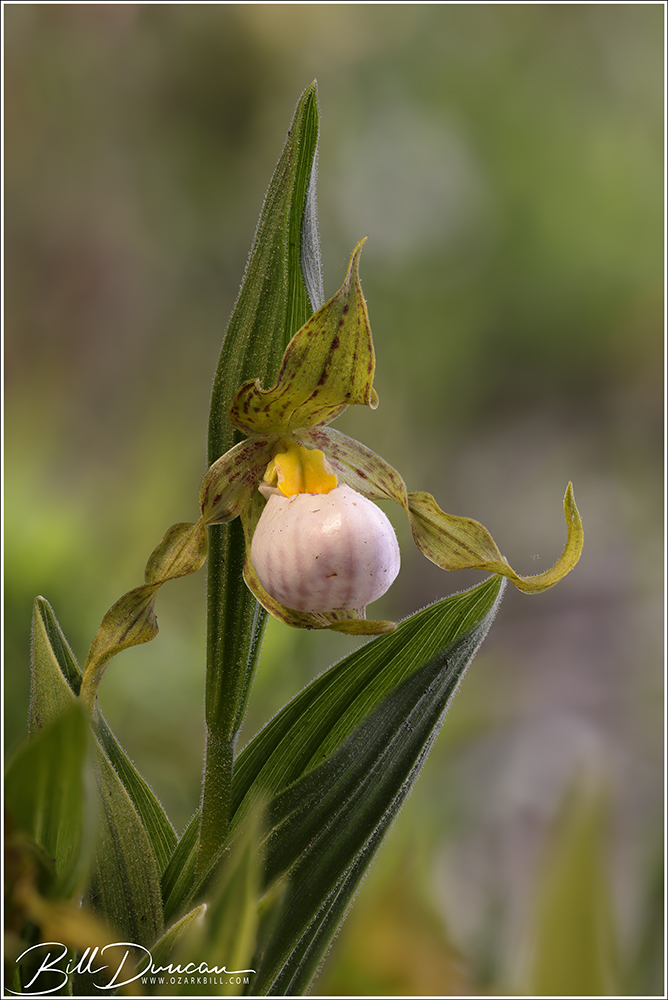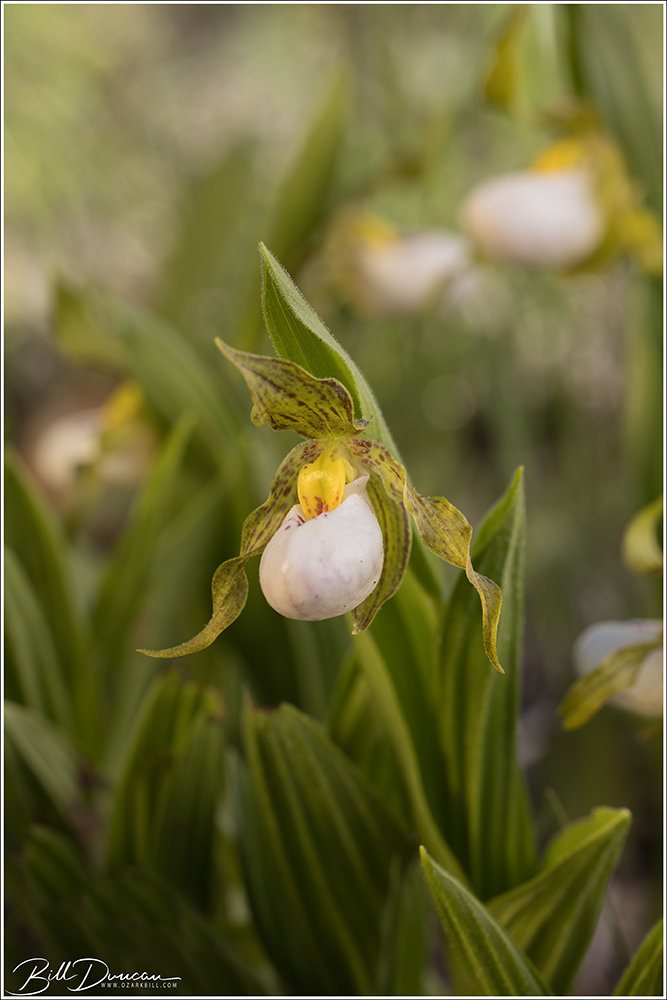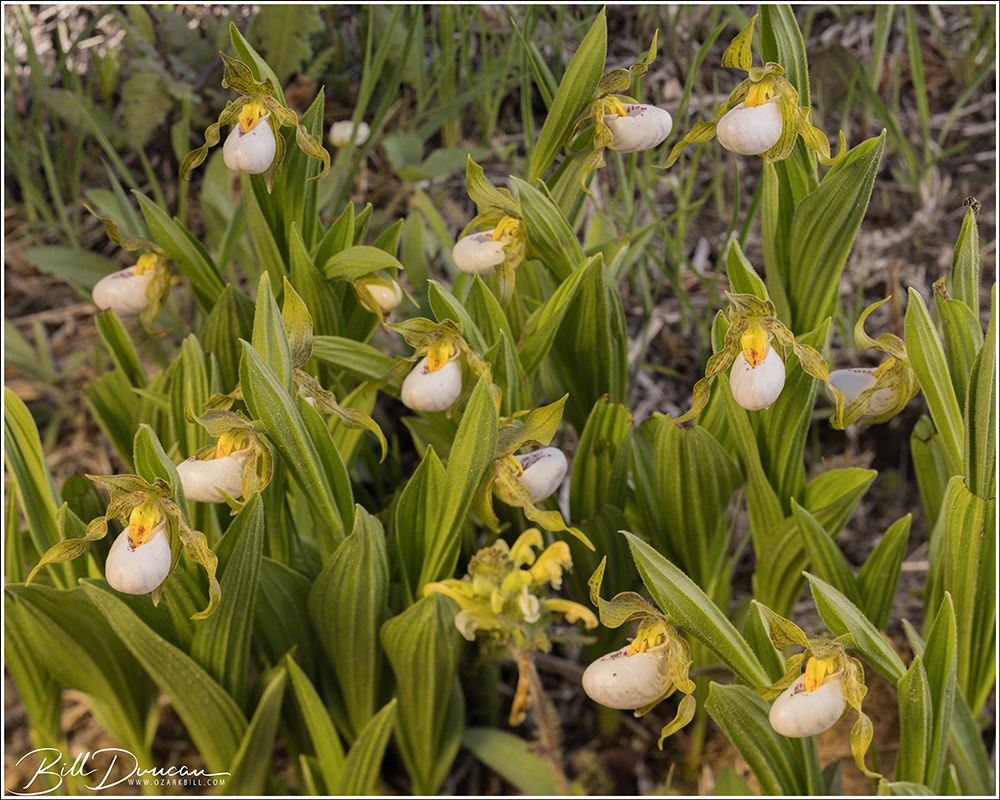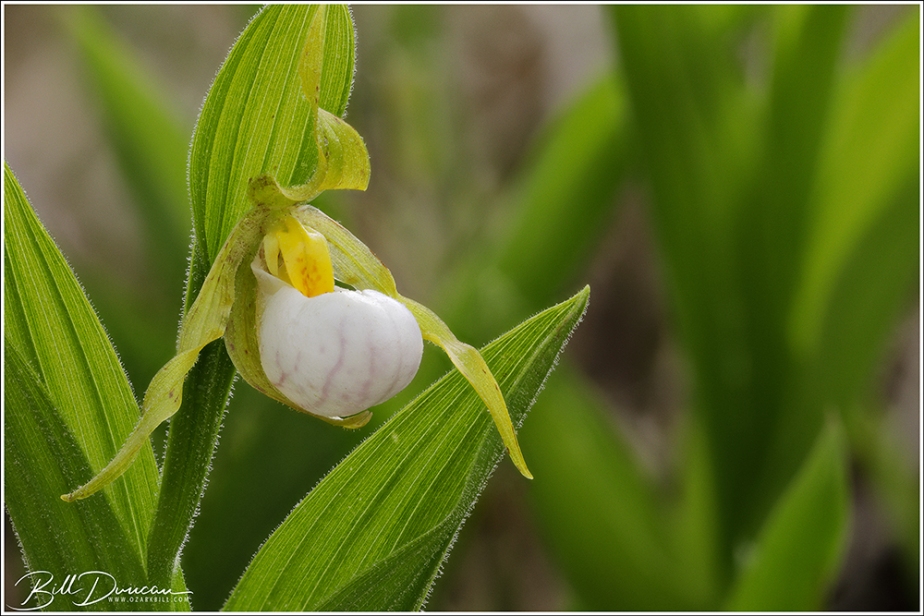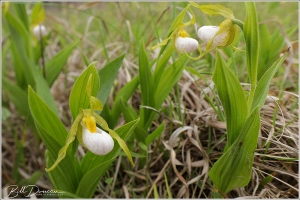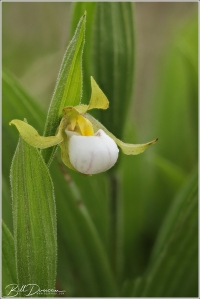Category: Missouri’s Orchids
Spiranthes ovalis – Another Look

Pete and I had both seen Spiranthes ovalis erostella prior to this outing in late September in Pope County, IL, but we both agreed that this was the finest specimen we had seen of what is usually a small and insignificant plant with a puny inflorescence.

Missouri Orchids – (Platanthera flava var. flava) – Tubercled Orchid
Here is my last new orchid for the season. It is also probably the orchid I had to work the hardest to find in this entire project. Platanthera flava var. flava is classified as S2 (imperiled) in Missouri due to the very few remaining populations. This is an orchid that likes its feet wet and can be found in a variety of habitats containing moist to wet soils. After trying unsuccessfully in 2020, Pete and I went back to the same location this year – a wet prairie in southern Missouri in early June. This was very tough searching as the high temps, strong sun and saturated air created a potentially dangerous heat index. We tried our best, slowly slogging through the already quite thick prairie. Just when it looked like Pete was wanting to throw in the towel, we came across a patch of less-dense vegetation with water about ankle-high. Here we found young orchids that numbered in the hundreds. Unfortunately, most were on the early side and were not fully flowering but we did find a few that made us happy. We also found that many of the orchids in this group had grazed top leaves – most likely from white-tailed deer that usually find orchids to be very appetizing.

There is another variety of this orchid, P. flava var. herbiola that is also found in Missouri. Recently Pete and I tried to find this in most of the known locations but came up short. As of now my quest stands at 33 of 36 orchid forms that can be found in the state (36 is my accepted number and others may disagree). In addition to P. flava var. herbiola, I also need to find Coeloglossum viride (Long-bract Frog Orchid) – this species is known from a single location in the state but apparently does not flower and Epipactis helleborine, the broad-leaved helleborine – the exotic orchid that is becoming naturalized in this state but originates in Asia and Europe. Finding these three remaining orchids should be quite the task and I look forward to attempting these next year.

I have run into a couple other circumstances in our orchid flora where intermediate forms have caused problems in determining the identity of a plant or population. Where these two varieties overlap, as they seem to do in Missouri, there are intermediate forms between these two varieties as well. I will hope that when I do find a potential herbiola variety that this will not become a problem.

The Last of the Ladies Tresses
This year I was able to find and photograph the last two of the Spiranthes (ladies tresses) orchids that can be expected to be found in Missouri.
First up is a plant that Casey and I found in Nevada County, Arkansas on May 9th. To my knowledge, S. praecox (grass-leaved ladies tresses) is found in only one location in the Show Me State. However, after checking for it on a few occasions, it looks as though the plant(s) did not bloom this year. Hopefully this population is still there and will bloom in a future year. The couple of blooming spikes Casey and I found in Arkansas were very striking, with deep green venation on the labellum.



Spiranthes praecox, grass-leaved ladies tresses
It is interesting to me that the final two Spiranthes orchids I had to add to my list are the largest two species by far. While S. praecox can reach heights of up to 75 cm, S. vernalis (spring ladies tresses) has been recorded at a meter in height! This species is distributed throughout the state, but is considered locally rare. This plant was found at Otter Slough C.A.



Spiranthes vernalis, spring ladies tresses
Back to the Prairie Platanthera
We really lucked out this past June when Casey and I took a trip to the northwest of Missouri in search of the two state-endangered prairie-fringed orchids. We were not sure if we would find Platanthera leucophaea (eastern prairie-fringed orchid) at all and chances were iffy to find both species flowering simultaneously. During some years, there may be gaps in the phenology of flowering of these two species in the state, which would require at least a couple of these long trips. As mentioned above, we not only found both species in our search but found them both at near-peak bloom.
First up is Platanthera praeclara (western prairie-fringed orchid) that we found in a reliable spot in Harrison County.


We were thrilled to find a population of approximately 40 Platanthera leucophaea (eastern prairie-fringed orchid) plants at a Grundy County location.
Missouri Orchids – Liparis loeselii – Fen Twayblade
Liparis loeselii (fen twayblade, Loesel’s twayblade) is ranked as imperiled in the state of Missouri. We found these in a marly fen in Butler County, MO in bloom during late May, 2021. Within this fen, these orchids grow on the edges between small tussocks and the marl/muck, out of the way of larger competitive plants.


-OZB
Missouri Orchids – Liparis liliifolia – Large Twayblade
Today’s orchid, Liparis liliifolia, (large twayblade, purple twayblade, lily-leaved twayblade, mauve sleekwort) is considered one of the most abundant in Missouri with quite a large range across the state. They have the potential to be found almost anywhere in the state with moist to dry-mesic forests, but do need open spots with partial sun. This is a species that benefits from disturbances and clearings due to fire, tree falls and human activity like trails where they are most likely to be found.

Insects are the most obvious choice for pollinators, however, there have not been many recorded observations of specific efficacious visitors and more information is needed to determine what species are responsible for pollinating this species. There is no real fragrance associated with these flowers. The purplish translucent flowers have been hypothesized to attract flesh flies which might be efficient pollinators. The primary mode of reproduction seems to be vegetative via underground corms.

The flowers are set in the typical 3-petals and 3-sepals configuration of the family. In this case, the lower petal, or “lip”, is mauve in color and translucent. The translucency was enhanced when the lip was wet. The two lateral petals are filiform, or worm-like. To me they resembled the nectar spurs found on some orchids, but these are not hollow and do not contain nectar. The three sepals are blade-like, with one facing straight upwards behind the column and two are lateral and underneath the lip. It would not be a stretch to say the entire flower might mimic some insect.

The large twayblade is definitely an interesting Missouri orchid. I will look for these close to home in the coming years and perhaps get some photos of their pollinators visiting.
-OZB
Missouri Orchids – Calopogon oklahomensis – Oklahoma Grass Pink
The second new “Missouri” orchid I came across on Casey’s and my trip through Arkansas in May was the Calopogon oklahomensis, the Oklahoma Grass Pink. This is a sister species to C. tuberosus, the Grass Pink, and likewise has the odd non-resupinate flower, meaning the flower pedicle does not twist and the lip is on the top side of the flower, an odd arrangement for orchids. Whereas C. tuberosus prefers wet feet and is typically found in fens, wet meadows and prairies, C. oklahomensis prefers drier feet and is found in more mesic prairies, savannas and open woods.

The orchids seen here were photographed in a prairie in Prairie County, AR. This location was a real treat, with hundreds of orchids and a variety of colorations. I wish we could have spent more time here photographing all the variations, but there were miles to be driven yet on this day.


-OZB
Cypripedium candidum (Small White Lady’s Slipper)

I have one more lady’s slipper we found in May to share. Cypripedium candidum or small white lady’s slipper requires moist and full-sun exposures, such as may be found in wet prairies, meadows, fens and forest edges. The reason for its rare status (likely found on fewer than five locations in the state) is due to habitat disturbance and orchid poachers digging them up for horticultural uses.
This species can hybridize with C. parviflorum (yellow lady’s slipper) when found in close proximity. This can potentially be a conservation concern in some states, but to my knowledge, there are no close associations between these two species in Missouri.
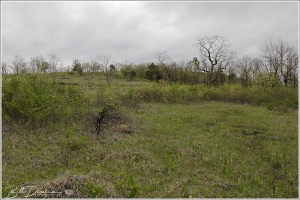
It was wonderful finding this and the other lady’s slippers in the state this year. I’m hoping this one can still be found here far into the future.
–OZB
Cypripedium parviflorum (Yellow Lady’s Slipper)

May was definitely a lady’s slippers month. My friends and I found four species within a week (three in MO, 1 in AR). Of the three species found in Missouri, two are species of conservation concern within the state – Cypripedium candidum, small white lady-slipper (S1) and C. reginae, showy lady-slipper (S2S3). I’ve shared photos of C. reginae on this blog before and a C. candidum post will be coming shortly.
I’ve posted photos of C. parviflorum (yellow lady’s slipper) here before as well but these accompanying photos were taken at a new location for me in St. Francois County. Some taxonomists, books and keys have this species split into two varieties – C. parviflorum var. pubescens, or the “greater” yellow lady’s slipper and C. parviflorum var. makasin, the “small” yellow lady’s slipper. Some authors have even split these two into specific status while even others have argued there is no basis in splitting these into varieties. From my limited experiences with these in Missouri and the taxonomic descriptions I have read, I have not seen ample evidence to suggest these should be split into varietal forms. There seems to be a lot of variation in the characteristics that are supposed to describe these two varieties and until someone shows me better proof that these should be treated as two separate forms, all I can say is that, “I’m from Missouri” and I will not be including these as two in my “master list” of the Missouri orchids.
If you are knowledgeable in this area and wish to argue, by all means, please let me know.
-OZB
